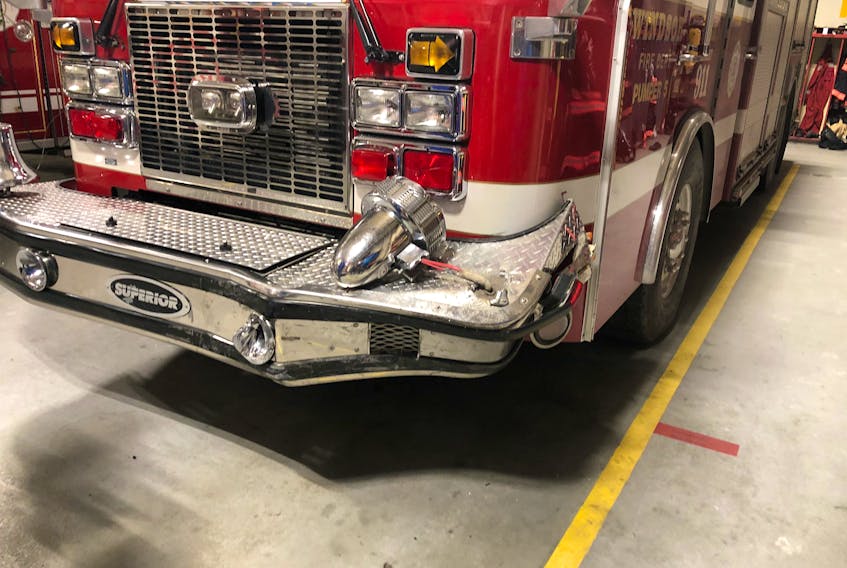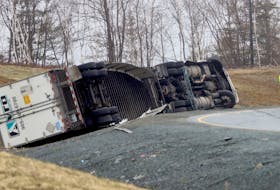After a month-long investigation, the driver of a car that struck a Windsor fire truck while firefighters were en route to an emergency scene has been charged.
Windsor RCMP Staff Sgt. Cory Bushell confirmed via email that the driver was charged with failing to yield to an emergency vehicle that was providing audible and visible signals.
The charge, under section 123 (2) of the Motor Vehicle Act, is classified as a summary offence ticket. It carries an out of court settlement of $180 for a first offence, up to $352.50.
The charge relates to the accident that occurred in Garlands Crossing near the Irving gasoline station on Dec. 12 around 9 p.m.
While Windsor firefighters were responding to a call for mutual aid, truck No. 5, a main attack pumper, was struck.
“It’s the main one that goes out first for everything that’s not a motor vehicle accident – so any structure fires, motor vehicle fires,” said Jamie Juteau, Windsor’s fire chief.
“This one is a little bit newer, a little better equipped; it’s set up with our new breathing apparatus in it.”

But it’s been out of service since the accident.
Juteau said the damage was isolated to the front section of the vehicle but said they’re looking at “in excess of $20,000” for repairs. It is covered by insurance.
The parts have been ordered via the U.S. manufacturer and Juteau hopes the company in Port Williams that will repair the rig will have it road-ready by mid-February.
Six firefighters were aboard the truck at the time of the collision and two were transported to the Hants Community Hospital with injuries. They are both back to work.
“We’re very lucky that somebody wasn’t seriously hurt,” said Juteau.
It’s the law to slow down to 60 kilometres per hour if an emergency vehicle is pulled over with its lights flashing. If the road has two or more lanes, motorists must move into the lane farthest from the stopped vehicle if it can be done safely.
“When one of these emergency vehicles approaches you from ahead or behind with its siren on, move to the right edge or curb of the road and stop completely. You must remain stopped until the emergency vehicle has passed or until a police officer directs you to move,” a fact sheet on the Nova Scotia government’s website reads.
Juteau said motorists need to remember that while fire truck drivers are highly trained, they are operating “heavy machines that you can’t stop on a dime.”









